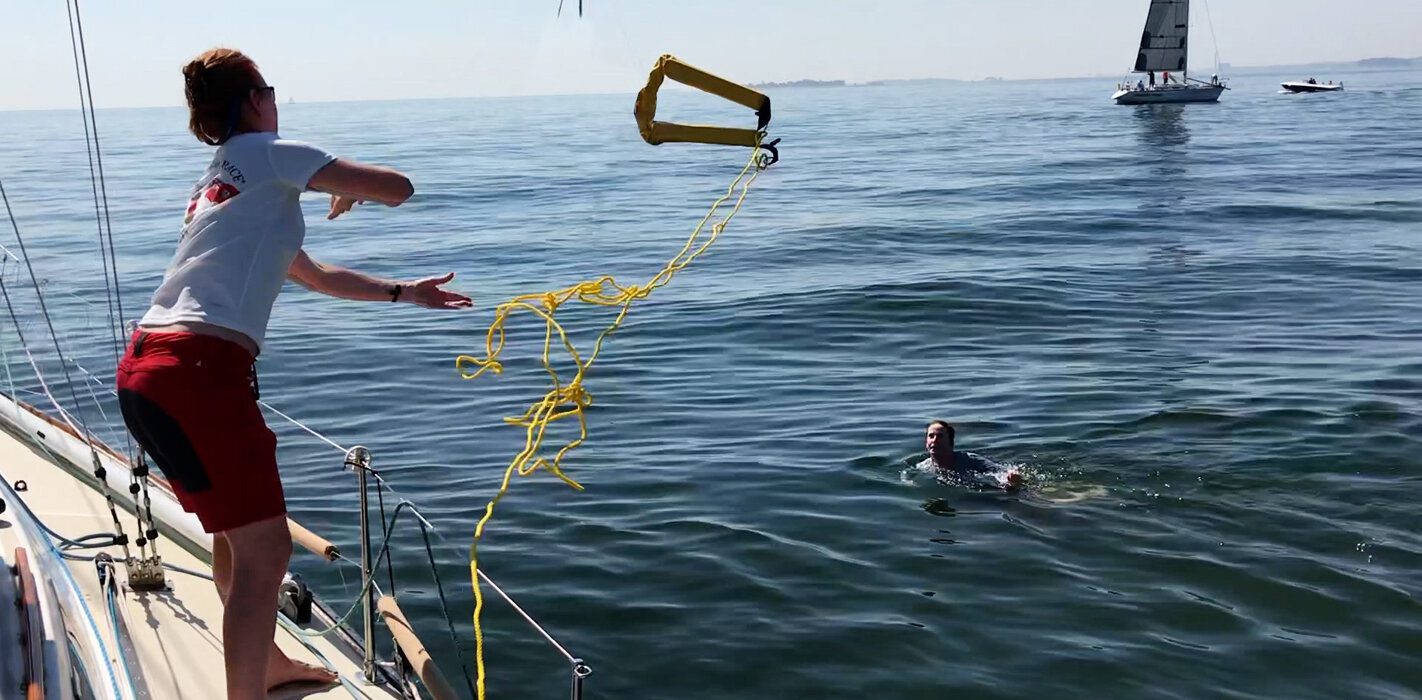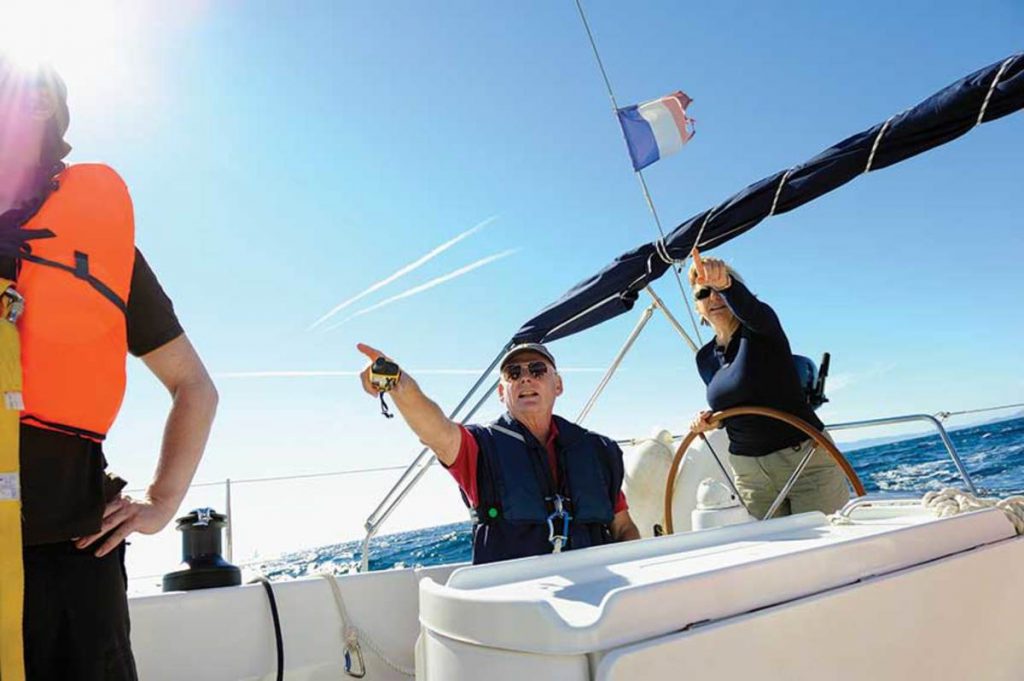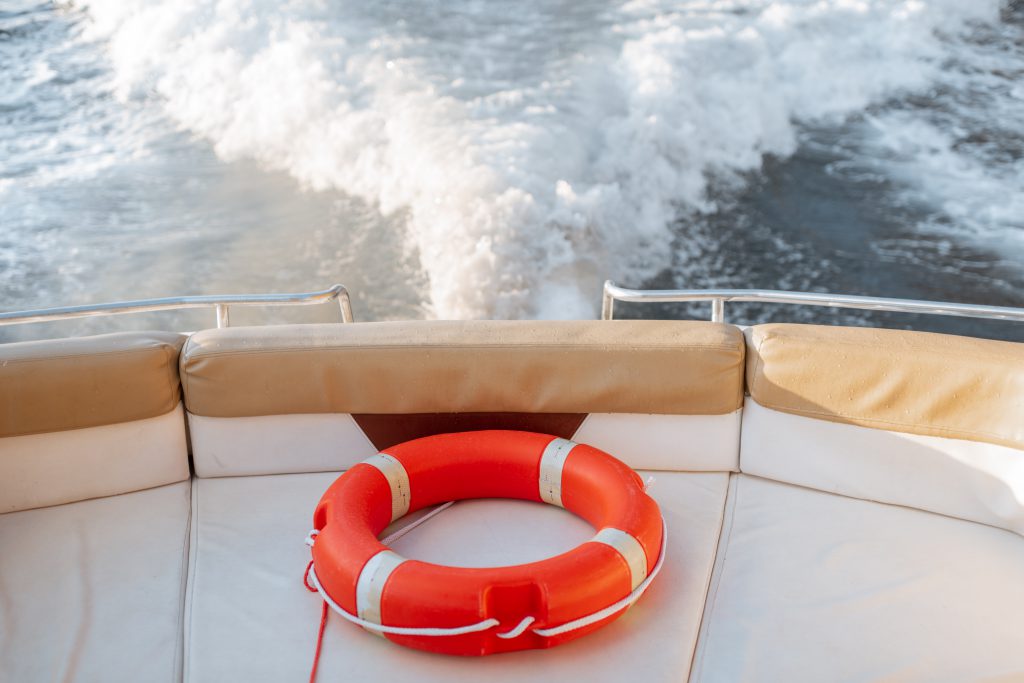Crew Over Board Drills, What to Know!
August 6th, 2022 by team

by B.J. Porter (Contributing Editor)
So…when was the last time you and your crew did an actual Crew Overboard (COB) drill? I don’t mean talking through what you would do or going over the theory and steps. I mean practicing a live drill where you toss a float overboard and go back and pick it up.
Yeah, it didn’t matter whether it was my racing crew or when we were out cruising…we were never as diligent about doing it as we should have been, either. But it’s just about the worst thing that can happen to you when you’re out on a boat, and even on a mild day near shore, you can lose someone overboard and not get them back.
So let’s take a sober moment to talk about preparing for something we hope never happens.
Your COB Methods
There are some great articles about COB recovery techniques out there, and this article isn’t there to reinvent that wheel. Though we’ll give you a bunch of links, the intent here is to get you out and practicing whatever method you pick.
Decide which technique works best for you, and in what conditions. This depends on how you use your boat, how many people sail with you, what their skill level is, and what kind of equipment you have installed on the boat. I can’t tell you the best option, but a race boat with eight or ten people on board has different options from a family cruising with two adults and two very young children.
A few of the more well known COB approaches include:
- The figure eight stop
- The quick stop
- The heave-to method
- The jibe stop
This excellent article from Sailing Magazine gets into details on them all and gives an excellent overview.
Doing the Drill

Whatever you decide is best, major steps to any recovery include:
- Alert the crew that there is a COB situation.
- Spot the person in the water and maintaining that visual contact with a dedicated spotter.
- Throw flotation and safety gear in the water to help the crew.
- Mark a GPS position at the start of the COB event in case you lose sight of them.
- Stop the boat and getting back to the crew.
- Crew recovery – get them back on board as quickly as you can.
You want to practice as much of this as possible, using the techniques you decided on for your boat and crew.
How to Practice
For an effective practice, realistically simulate as much as you can of what will really happen. Every adult (and older child with the skills and maturity) on board should have a turn at the helm, even if they rarely touch the wheel. Because you never know who’s going to go over. If Dad is the only one who drives the boat and knows how to get back to a crew in the water, you’ll have a big problem if he’s the one who goes over.
Do your practice in rounds, rotating through your regular crew and family. Take a fender or float and tie the lines in a loop so you can fish it out with a boathook; this will be your COB. It’s also best if you can surprise everyone with a drill, because it’s most realistic if they don’t know it’s coming. But that’s tough to do if you’re out just to practice crew recovery drills…
For each round of practice:
- Designate a crew member to “go overboard.” Yes, you need to do this down one crew member or it’s not realistic. This crew member may toss the fender overboard to start the drill, but after that, they should get out of the way and stay quiet. They are in the water after all, so they can’t help.
- Have a different driver each time, and make sure everyone gets a turn.
- The spotter is usually the first person who sights the crew in the water, so visual contact isn’t lost. They should point at the COB until they’re right near the boat, even if they have to switch arms when they get tired. Keep the spotter on task.
- You can skip throwing all your cushions and coolers in the water (step 3), since it’s just a drill. But it’s not a bad idea to have people practice accessing things like PFDs and floats, throwing lines, and Lifeslings, so they know where they are.
- Fetch that fender out of the water and start over each time. Don’t just drive away and start a new drill if you can’t get it the first time, treat it like a real person.
Safety Considerations

It would be unfortunate to injure someone or break the boat while practicing safety drills. So be careful, because a COB recovery should be fast to get back to the person on in the water. But you don’t want it chaotic and dangerous with accidental jibs and equipment breakage, which is why we practice.
The most important safety rule is don’t practice by putting a real person in the water. I can not emphasize this enough. I don’t care if you’re in the tropics practicing on a clear day in 80 degree water and there’s no risk of hypothermia. Don’t practice on live crew. There are several reasons for this.
- Inexperienced drivers are practicing close approaches to a person in the water. You don’t want them to drive over a perfectly healthy person who is in no danger.
- Hauling someone onto a boat in the water can be dangerous and difficult. You can hurt the victim or other people trying it, and you really only want to take those risks in an actual situation. Talk about how you will do it, but don’t risk anyone.
- There’s still always a risk something could go wrong and you never want to sail away from crew in the water, even when practicing.
When it’s done
When you finish your drills, talk over how they went. It’s likely you’ll have a few bad takes and struggle to get that fender back on board or get back to it. Those are chances to learn, so make sure you go over them while blaming no one for the outcome.
And once you’re done, you’ll be totally prepared for the much more common “hat overboard” drills we had every single summer!


Leave a Reply